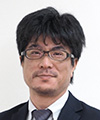 |
|||||||
|
|
|||||||
|
Feature Articles: International Standardization Trends Vol. 22, No. 1, pp. 29–37, Jan. 2024. https://doi.org/10.53829/ntr202401fa3 Standardization Trends Related to Wireless CommunicationsAbstractWireless communications, encompassing mobile communications, satellite communications, wireless local area networks (LANs), and fixed wireless systems, play a major role in communication networks. In preparation for the World Radiocommunication Conference 2023 (WRC-23) that was held in November 2023, the International Telecommunication Union - Radiocommunication Sector (ITU-R), a de jure standards organization, conducted studies and discussions broader than those limited to Beyond 5th-generation mobile communication system (5G) and 6G. The 3rd Generation Partnership Project (3GPP), a private standardization organization, has also started to study specifications after Release 18 under the name “5G-Advanced,” as a further evolved version of 5G. The IEEE 802.11 Working Group (WG), a WG of the Standards Association under the Institute of Electrical and Electronics Engineers (IEEE), is studying next-generation wireless LANs. This article introduces these standardization efforts as well as the NTT Group’s activities for standardization of satellite communications, fixed wireless communications, and radio-wave propagation. Keywords: Beyond 5G, 6G, wireless LAN 1. IntroductionInternational standardization organizations focusing on wireless communications include the 3rd Generation Partnership Project (3GPP) and the Institute of Electrical and Electronics Engineers (IEEE), both of which are forums, and the International Telecommunication Union - Radiocommunication Sector (ITU-R), a de jure standard organization, that defines methods of using frequencies. The NTT Group has been actively involved in these standardization organizations to expand services, promote global adoption of the technologies it has developed, and contribute to the efficient use of frequencies. This article introduces the NTT Group’s activities and recent trends in the following standardization organizations: 3GPP and ITU-R Study Group (SG) 5/Working Party (WP) 5D, both working on International Mobile Telecommunication (IMT); ITU-R SG 4/WP 4A, working on fixed satellite communications; IEEE and ITU-R SG 5/WP 5A, both working on wireless local area networks (LANs); ITU-R SG 5/WP 5C, working on fixed wireless communications; and ITU-R SG 3, working on radio-wave propagation, which supports the studies being undertaken by the above organizations. 2. Trends related to mobile communications2.1 Trends in 3GPP3GPP is a partnership project launched in December 1998 by national and regional standardization organizations to develop standard specifications for third-generation mobile communication systems (3G). The standard specifications created by 3GPP are published as national and regional standards by the six standardization organizations in different parts of the world that serve as organizational partners (OPs) in standardization. OPs collaborate to propose standard specifications to ITU. These become international standards when ITU approves them as recommendations. 3GPP consists of two major groups: the Technical Standardization Group (TSG), in which companies and other organizations directly participate to create technical specifications, and the Project Coordination Group (PCG) in which OPs participate to determine the overall timeline and manage progress. 3GPP publishes standard technical specifications, for which a release number is assigned to each functional set, called a “Release.” Release 15 (Rel-15), which was completed in 2018, defined 5G, which is now commercially deployed worldwide. After formulating Rel-15, 3GPP issued Rel-16 and Rel-17 to expand the scope of functionality and improve the performance of 5G. 3GPP calls Rel-18 and follow-up releases “5G-Advanced” and started the development of the Rel-18 specifications in 2022. 5G-Advanced is targeted for commercial service in the late 2020s and will serve as a steppingstone toward 6G, which is targeted for commercial service by around 2030. Figure 1 shows the 3GPP standardization timeline for the 2010s and 2020s. The 6G-related schedule in the figure is a projection backward from the target for commercial service launch by around 2030. At this point, the schedule for future 3GPP releases and their correspondence to 6G have not been determined, but it is expected that 5G-Advanced will be covered by Rel-18 to Rel-20, just before the 6G specifications are developed.
2.2 Trends related to IMTNTT DOCOMO works on standardization related to wireless communications, such as mobile service operations, including IMT, which is a mobile communication system compliant with international standards, radio communication systems, and the frequencies used. Specifically, NTT DOCOMO actively participates in SG 5, which is in charge of terrestrial wireless communications in ITU-R, and WP 5D within SG 5. The following summarizes the activities of WP 5D, focusing on three topics that have been attracting attention. (1) Identification of new IMT frequencies The study on the use of new IMT frequencies started after the World Radiocommunication Conference 2019 (WRC-19). The Second Session of the Conference Preparatory Meeting for WRC-23 (CPM23-2) held in March through April 2023 summarized the studies to date on frequency sharing; thus, the preparations for WRC-23 were well underway. Specifically, with experts on IMT and other radio systems participating, WP 5D held meetings for detailed preliminary discussions on whether the use of a new frequency will cause interference to other radio systems and on what conditions are needed to avoid such interference. In WRC-23 Agenda Item 1.2 on the additional identifications of IMT frequencies, Region 3 (Asia-Pacific region), including Japan, is considering the 100-MHz bandwidth from 7025 to 7125 MHz. WRC-23, held in November 2023, decided whether this frequency would be identified as a candidate for IMT. (2) Study on frequencies for high-altitude platform stations as IMT base stations High-altitude platform stations (HAPS) have been attracting attention as a next-generation telecommunications infrastructure. The frequencies to be used for HAPS as IMT base stations (HIBS) has been discussed as WRC-23 Agenda Item 1.4. As with WRC-23 Agenda Item 1.2, CPM23-2 has summarized the studies to date on frequency sharing; thus, the preparations for WRC-23 were well underway. As of 2022, the frequency bands, 1885–1980, 2010–2025, and 2110–2170 MHz, were available for HIBS in Region 3, including Japan. In addition to these frequencies, further expanding the frequencies for HIBS by using candidate frequencies below 2.7 GHz, shown in Fig. 2, was studied in WRC-23 Agenda Item 1.4 and decided upon in WRC-23.
(3) Development of Recommendation ITU-R M.[IMT.FRAMEWORK FOR 2030 AND BEYOND] In a somewhat different vein from previous frequency topics, WP 5D began discussions in 2021 with the aim of developing a new draft recommendation that defines the future role of IMT and the framework and objectives for that role. Specifically, WP 5D has had extensive discussions on the framework for IMT development beyond 2030, called IMT-2030, usage scenarios of IMT-2030, the definition of capabilities, and their target values. Through more than two years of integration and deliberation of proposals from different countries, the WP 5D meeting in June 2023 agreed on a new draft Recommendation ITU-R M.[IMT.FRAMEWORK FOR 2030 AND BEYOND], which includes an IMT-2030 usage-scenario diagram (Fig. 3(a)) and capability diagram (Fig. 3(b)). This issue was discussed at SG 5 held in September 2023. After approval of this recommendation, more detailed technical requirement specifications will be developed in cooperation with 3GPP and other organizations to achieve IMT-2030.
3. Trends related to fixed satellitesWP 4A belongs to ITU-R SG 4, which is in charge of satellite services, and deals with the effective use of orbits and frequencies for fixed satellite services and broadcasting satellite services. In connection with WRC-19 Agenda Item 1.5, a technical study was conducted on the use of Earth stations in motion (ESIM) for communications at 17.7–19.7 and 27.5–29.5 GHz with space stations in geostationary-satellite orbit (GSO), and Resolution 169 (WRC-19) was developed. Resolution 169 (WRC-19) requested, in particular, regulation on aeronautical ESIM (A-ESIM), which is mounted on airplanes, to protect terrestrial wireless services (mainly 5G) operating at 27.5–29.5 GHz. In July 2023, WP 4A agreed on a draft new recommendation that defines a calculation method based on the A-ESIM’s flight altitude and location for complying with the transmission power requirements, and SG 4 approved this recommendation. During the WRC-23 study cycle, WP 4A was in charge of mainly five WRC-23 agenda items. One is Agenda Item 1.16, in which the use of ESIMs for communications at 17.7–18.6, 18.8–19.3, 19.7–20.2, 27.5–29.1, and 29.5–30 GHz with space stations in non-GSO was studied. As with WRC-19 Agenda Item 1.5, Japan is contributing to appropriately protect terrestrial wireless services on the basis of Resolution 169 (WRC-19). 4. Trends related to wireless LANsNTT laboratories are engaged in the development of standards for wireless LANs, particularly in the IEEE 802.11 Working Group (WG). The laboratories are also involved in the discussion on the international regulations governing the use of radio waves/frequencies. Specifically, the laboratories participate in the discussion in WP 5A responsible for land mobile wireless systems other than IMT within ITU-R SG 5, which is in charge of terrestrial services, and in the discussion in the WRC, which is responsible for the revision of the Radio Regulations (RR), an international treaty on radio waves. 4.1 Trends in IEEE 802.11 WGIEEE 802.11 WG is discussing various functions and topics to develop new standards. There are several discussion groups in IEEE 802.11 WG, among them, Task Group be (TGbe) and the Ultra High Reliability (UHR) SG are discussing the latest and forthcoming wireless LAN standards. TGbe focuses on IEEE 802.11be (11be), the next-generation high-speed standard succeeding the current (as of August 2023) standard IEEE 802.11ax (corresponding to Wi-Fi 6/6E). The UHR SG is discussing a standard that will succeed the above next-generation standard. IEEE 802.11be (corresponding to Wi-Fi 7) is aimed at achieving a maximum throughput of 30 Gbit/s or higher and low latency and expected to include specifications on the modulation multi-level number for 4096 QAM (quadrature amplitude modulation); the bandwidth utilization of 320 MHz, which is twice the conventional bandwidth in the 6 GHz frequency band; multi-link operation, which coordinates multiple wireless transmission functions that are implemented in a single chassis; and restricted target wake time, which gives high priority to the transmission of periodic traffic requiring low latency. TGbe is revising the draft standard and scheduled to complete its standardization in December 2024, as shown in Fig. 4.
While major standards focus on achieving high-speed transmission, the UHR SG mainly aims at standards that will achieve low latency and high reliability in wireless access. Candidate technologies being considered for achieving the above goals include: multi-AP coordination technology, in which multiple access points (APs) cooperate in transmission and reception; a function that gives priority to low-latency transmission of non-periodic traffic; uninterrupted handover when stations switch from one AP to another; and technology for improving the efficiency of frequency utilization. In November 2023, TGbn began discussions on the development of a new standard on the basis of the deliberations at the UHR SG, with the goal of completing its standardization as IEEE 802.11bn (11bn) in March 2027. The UHR SG was also discussing the functionality of the 60-GHz spectrum (millimeter wave band), which is assumed to be used as a supplement to 11bn, and the IMMW (Integrated Millimeter Wave) SG was established in November 2023 as a new SG separate from TGbn and will begin discussions on this functionality. 4.2 Trends in ITU-R and WRCThe following wireless LAN-related topics have been studied in ITU-R. WRC-19 agreed in 2019 to revise the RR to enables outdoor use and higher transmission power in the 5.2-GHz band [1]. The technical foundation for this revision was studied by WP 5A. NTT laboratories were actively involved in this study. Although WRC-23 had no agenda item addressing wireless LANs, WP 5A continues to discuss wireless LANs, focusing on the following two issues. The first is modifications to Recommendations ITU-R M.1450 and M.1801, which specify the technical characteristics for wireless LANs. One focal point is a proposal to add IEEE 802.11ax, which operates in the 6-GHz band, in the light of updating IEEE 802.11. However, China, Russia, and other countries expressed concern that the increased use of the 6-GHz band for wireless LANs intensifies interference with other systems and proposed instead to restrict the use of the 6-GHz band for wireless LANs. This issue is still being discussed. Japan has submitted a proposal to reflect the revision of the RR in WRC-19 and recent amendments to the national regulations to allow the use of the 6-GHz band for wireless LANs as well as an objection to the proposed restriction on the use of the 6-GHz band. NTT’s proposal and objection are tentatively reflected in working documents. Second, WP 7C, which is in charge of Earth exploration satellites, has requested WP 5A to study the parameters of the wireless LAN that are appropriate for evaluating shared use of the 6-GHz band for both wireless LANs and Earth exploration satellites. As shown in Fig. 5, both issues center on the shared use of the 6-GHz band with other systems. NTT laboratories continue to be active in WP 5A as the body responsible for wireless LANs within the Japanese delegation.
5. Trends related to fixed wireless systemsWP 5C, a working party under ITU-R SG 5, is responsible for the standardization of fixed wireless systems, and NTT laboratories are involved in its activities. With the technical progress in the use of sub-terahertz waves (92 GHz and above), which make high-speed, broadband communications possible, major topics currently discussed in WP 5C include recommendations on the channel arrangement of the frequencies used for fixed wireless systems in the W-band (92–94, 94–100, 102–109.5, and 111.8–114.25 GHz) and D-band (130–134, 141–148.5, 151.5–164, and 167–174.8 GHz) to achieve global harmonization and protect passive sensors for Earth exploration satellites. The completion of these activities is expected to facilitate the worldwide deployment of high-capacity fixed wireless systems for mobile backhaul and fronthaul links. WP 5C is also studying future trends and use of fixed wireless systems. Its study results are summarized in Report ITU-R F.2323 “Fixed service use and future trends.” The use of fixed wireless systems includes the provision of telecommunication services to areas where it is difficult to install wired facilities, as shown in Fig. 6. To promote the deployment of the VHF (very high frequency)-band subscriber digital wireless system (TZ-68D) [2, 3] developed by NTT Access Network Service Systems Laboratories to the rest of the world, NTT laboratories have submitted to WP 5C a document reporting that TZ-68D has technical features that enable long-distance (several dozen kilometers) and out-of-sight transmission and that TZ-68D is now operational in Japan.
6. Trends in standardization related to radio-wave propagationNTT laboratories are engaged in standardization activities in ITU-R SG 3, which deals with radio-wave propagation. Specifically, the laboratories participate in WP 3J, in charge of propagation fundamentals, WP 3K, in charge of point-to-area propagation, WP3K, in charge of ionospheric propagation, and WP 3M, in charge of point-to-point and Earth-space propagation. SG meetings are held approximately once every two years, and WP meetings are held in principle once a year. In 2023, SG and WP meetings were held from May 22 through June 2. The SG meeting was attended by 210 participants from 27 organizations and 32 countries (15 participants from Japan), and 156 contributions were submitted to the 4 WP meetings and 39 to the SG meeting. As a result of the discussions, SG 3 revised 18 Recommendations, revised 2 Reports, revised 3 Questions, and added one Question. This article presents an overview of the activities in SG 3, focusing on topics related to the high-frequency band, which have attracted much attention. 6.1 Recommendation ITU-R P.1238 (Propagation data and prediction methods for the planning of indoor radiocommunications)Japan, the UK, and Korea contributed example measurements of propagation above 100 GHz in various environments. SG 3 will discuss the prediction methods in offline meetings with the aim of completing a recommendation at the next meeting. A new recommendation for a new propagation-attenuation prediction model below 100 GHz applicable to conference room environments was made by adding new measurement data. A new off-line group was also established to discuss the issue of human body shielding, which becomes problematic in the high-frequency band, with the goal of developing a new recommendation. The group will continue the discussion on this issue up to the next meeting. 6.2 Recommendation ITU-R P.1411 (Propagation data and prediction methods for the planning of short-range outdoor radiocommunications)It was agreed that, based on the measurement data provided up to the 2022 meeting, parameters mainly for broadband characteristics, such as delay spread and angular spread, would be added to the table in this recommendation. The contributions from Japan and the United States triggered a heated discussion on a line-of-sight probability-prediction model. It was decided that further study was needed, and a new off-line group was established. 7. Future outlookThe demand for wireless communication systems and radio spectrum is increasing yearly. It is expected that a wide variety of discussions will take place in 3GPP, the ITU-R (including WRC-23), and IEEE to study technical standards and broader frequency bands, with an eye to Beyond 5G, 6G, and next-generation wireless LANs. We will continue to drive our international standardization activities, taking not only domestic use but also international coexistence into consideration. References
|
|||||||























